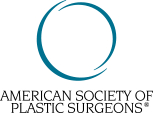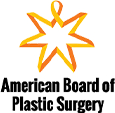
Posted by Laurence Weider on April 26, 2025
One month after breast augmentation surgery marks a turning point in your recovery journey. At this point, many patients are moving beyond the initial healing phase and into a more stable, manageable period. It is still completely normal to experience lingering sensations and notice visible changes on some days.
Learning what is typical at this point can lessen anxiety and help you track your progress with confidence. In this post, we will walk you through what you can expect four weeks after surgery, what’s normal, what’s not, and how to navigate the remainder of your recovery.
Entering Week Four: A Noticeable Shift
On the 3rd or 4th week post-surgery, most women feel a significant difference in how they move and feel. Daily tasks that once seemed challenging become easier, and the feeling of tightness across the chest continues to fade. Although it may feel like you’re “almost there,” the truth is that you are still continuing to heal.
Everyone heals differently. Some may feel nearly back to normal, while others continue to notice some discomfort and observe some ongoing visual changes. Final results—especially in terms of breast shape and implant position—can take several more weeks or even months to fully emerge.
How Much Discomfort is There One Month After Surgery?
By the one-month mark, most of the discomfort and tightness have resolved. That said, some sensations are still common:
- A mild, dull ache or tenderness near the incision areas
- Occasional tingling, itching, or nerve “zaps” as healing continues
- Temporary soreness during activities that engage chest muscles
While these symptoms are typical during this phase, any sharp, sudden, or escalating pain should be reported to your plastic surgeon. It’s always better to check in than to overlook a potential issue.
Changes in Breast Shape, Swelling, and Sensation
Although swelling usually decreases by week four, don’t be surprised if your breasts still look or feel different than you expected. Some normal changes at this stage may include:
- Implants that sit higher than anticipated
- A firmer or uneven appearance; The implants often drop into position at different times
- Inconsistent nipple sensitivity—some days more, other days less
This part of the healing journey is often referred to as the beginning of the “drop and fluff” stage. During this time, implants gradually settle into their natural position, and the surrounding tissue softens. Expect continued improvement over the next several weeks.
A Week-by-Week Glimpse at Recovery
Healing unfolds gradually. While each patient is unique, here’s a general recovery timeline most can relate to:
- Week 1: Moderate swelling and tightness; rest is essential.
- Weeks 2–3: Discomfort begins to fade; normal daily movement becomes more manageable.
- Week 4: Daily routines have resumed, but restrictions—especially around exercise—may still apply.
Although week four marks real progress, don’t forget that full internal healing can extend beyond the first month. Keep following your post-op care instructions for the best results.
When Is It Safe to Go Back to Work and Exercise?
How your body is healing and what type of job you have will determine when you can return to your regular schedule. Generally speaking:
- Desk or sedentary jobs: Most patients can return within 1–2 weeks.
- Physically demanding work: 4–6 weeks is what you need before you can do strenuous activity.
- Exercise routines: Intense Cardiovascular and strength training should only resume after your surgeon gives you the green light, usually around 6 weeks post-op.
If you’re wondering, “How long should I take off work after breast augmentation?”, remember: it’s not one-size-fits-all. Always listen to your body and follow your surgeon’s advice.
What’s Normal—and What’s Not—After Four Weeks?
Knowing which symptoms are expected and which ones could indicate a problem is vital during this stage of recovery.
Common, Normal Signs:
- Lingering tenderness or slight soreness from time to time
- Shifting levels of nipple sensitivity
- Temporary asymmetry as implants settle
When to Call Your Surgeon:
- Sharp, persistent, or worsening pain
- Swelling that increases or appears uneven
- Redness, discharge, or other changes at the incision site
Don’t wait or self-diagnose if something feels off. Prompt medical attention can prevent complications and offer peace of mind.
Still Feeling Unsure? You’re Not Alone
It’s completely natural to have questions even weeks after surgery. Maybe you’re unsure about how your breasts look or feel. Maybe the healing process isn’t moving as quickly as you expected. At this stage, reassurance and personalized guidance go a long way.
At Weider Plastic Surgery in Dallas, Texas, we understand how important aftercare is to your peace of mind. Our team is committed to walking beside you from consultation through recovery and beyond. Whether you’ve recently had surgery or are just exploring your options, we’re here to answer your questions and support your journey every step of the way.
If you’d like to schedule a consultation, give us a call at (972) 566-8444. We’d be happy to help you feel confident and informed from the initial consultation and throughout your entire journey.
Dr. Weider, a native of Southern California, is a Board-Certified Plastic Surgeon who has maintained a private practice in Dallas, TX since 1999. After attending Stanford University, he obtained his medical degree (M.D.) from Baylor College of Medicine in Houston. He then completed a one year surgical internship in Los Angeles at Harbor-UCLA Medical Center, followed by a four year general surgery residency in Dallas at Methodist Medical Center, and a two year plastic surgery fellowship in Cleveland at Case Western Reserve University.







